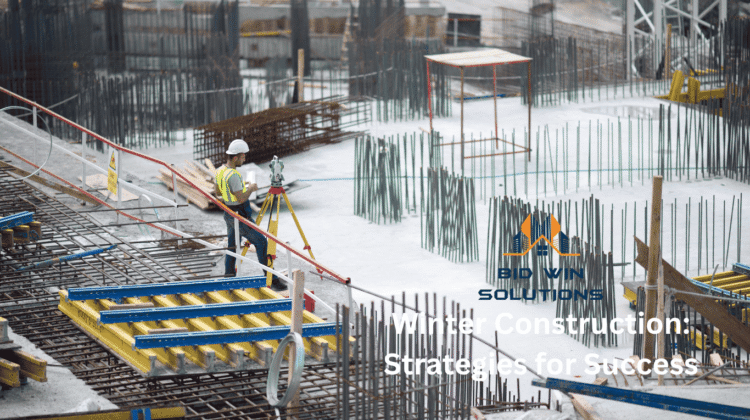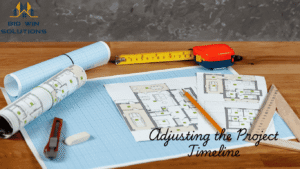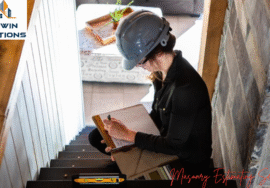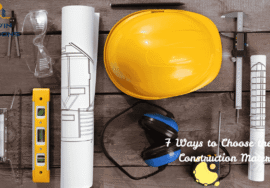
Winter Construction: Strategies for Success
Construction in winter isn’t easy. Cold, wind, snow, and ice create real obstacles. Still, many projects can and do succeed during the colder months. With careful planning, smart decisions, and accurate estimating, winter construction can run smoothly.
This article explores how to approach building work in winter. It highlights the key challenges and outlines smart strategies. Whether you’re involved in concrete estimating, plumbing estimating, or steel estimating, this guide offers practical insight for staying on track.
The Cold Truth About Winter Construction
Winter slows everything down. Materials behave differently. People work slower. Equipment can freeze. Mistakes are more costly in harsh conditions. But winter isn’t the enemy. Poor planning is.
A strong winter construction plan begins with awareness. Know the risks. Prepare early. Communicate with your team and suppliers. Small errors can lead to long delays. Precision matters a lot.
-
Strategy 1: Mastering Construction Estimation
Every winter project begins with your accurate construction estimating ability. You must have a budget for more than the basics. Heating, protective gear, snow removal, and temporary enclosures cost money.
Inaccurate estimates lead to overspending. Worse, they lead to delays. Every trade is affected.
- Concrete estimating must consider additives and heat curing methods.
- Drywall estimating must account for moisture control and delivery delays.
- Painting estimating should factor in low-temperature paints and extra drying time
- Plumbing estimating may include pipe insulation and emergency frost protection.
- Electrical estimating might involve delays due to frozen conduits or slow installation.
- HVAC estimating often involves added costs for keeping internal areas warm during fit-outs.
- Steel estimating must consider cold-induced brittleness and potential welding complications.
- Lumber estimating must account for protection against snow and damp storage conditions.
Planning for these from day one prevents surprises on-site.
-
Strategy 2: Adjusting the Project Timeline

Daylight fades fast in winter. That alone limits work hours. Snow or frost may stop work suddenly.
You need flexible scheduling. Build in buffer time. Avoid tight deadlines.
Think of the weather as another stakeholder. Check forecasts often. Use contingency plans. If roads shut down or machines freeze, you’ll want a backup plan.
Winter projects rarely follow summer timelines. Adjust your expectations, and you’ll reduce stress and loss.
-
Strategy 3: Preparing the Site
Before any winter construction begins, prepare the site. Snow must be cleared. Ice must be treated. Pathways should be safe.
Store materials off the ground. Use tents or temporary enclosures. Heating systems may be necessary to prevent freezing.
Machinery should run on winter-grade fuel and be tested often. Plan for more frequent maintenance.
If workers feel cold or unsafe, progress will slow. A warm and organised site keeps people motivated and reduces accidents.
-
Strategy 4: Managing Materials Properly
Some materials behave badly in the cold. Others get ruined if stored incorrectly. That’s why material protection is key.
Concrete, for example, needs to stay warm during curing. Blankets or heated enclosures are often used. Your concrete estimating strategy should reflect this.
Drywall absorbs moisture easily. If it freezes, it becomes weak. Your drywall estimating must include safe, indoor storage.
Paint won’t apply or dry properly below certain temperatures. Low-temp paints cost more. This must go into your painting estimating.
Steel gets brittle when cold. Welds may crack. Steel estimating should include longer labour times and specialist welding supplies.
Wood swells and contracts in winter. Wet timber can cause serious issues. Your lumber estimating must include dry storage costs.
Each trade has different storage needs. Ignoring them leads to damage and waste.
-
Strategy 5: Protecting the Crew
Winter conditions are hard on workers. They wear more gear, move slower, and tire faster.
Offer warm break areas. Provide heated shelters. Supply gloves, boots, and thermal clothing. It costs more, but improves safety and morale.
Tired, cold workers are more likely to make mistakes or get injured. Fewer accidents mean fewer delays. That’s why worker welfare is part of good construction estimation.
Train staff to identify signs of frostbite and hypothermia. Encourage short, frequent breaks. Safety comes before speed.
-
Strategy 6: Using the Right Equipment
Standard machines often struggle in cold weather. Oils thicken. Batteries die. Engines refuse to start. Invest in winter-ready tools. Use cold-weather lubricants. Keep spare parts on site.
Snow ploughs and gritters may be needed. They must be part of your equipment budget. Winter power tools might need special cases or internal heating. Keep them stored properly.
Efficient winter construction depends on functioning equipment. Downtime costs time and money.
-
Strategy 7: Communication is Everything
Winter changes fast. Clear, daily communication keeps projects stable. Hold regular site meetings. Update everyone on weather risks. Let workers raise safety concerns.
Keep clients informed too. Explain any delays caused by weather. If you’re transparent, trust will remain strong.
Good winter construction relies on good relationships. Clients who understand the risks are less likely to panic when timelines shift.
-
Strategy 8: Know When to Pause
Sometimes, the safest choice is to stop work. If a snowstorm is coming, shut down early. If wind chills are dangerous, reschedule.
Pushing on when it’s unsafe can lead to broken equipment or injuries. Lost time can be made up. Lost lives cannot.
Plan your budget and schedule with these pauses in mind. Flexibility is not weakness—it’s good leadership.
Why Winter Construction Can Be Worth It

Many builders avoid winter projects. That creates opportunities. Materials might be cheaper. Labor is more available. Permit offices are less busy.
If you manage it right, winter construction can be smoother than summer. Fewer delays from other contractors. Quicker approvals. Less pressure overall.
Winter rewards the prepared one. Every pound you spend on proper winter construction estimation will pay off later.
Final Thoughts
Winter construction is not easy, but it’s far from impossible. Every challenge can be met with good planning and strong execution.
Start with smart, detailed estimating. Think through every trade: from concrete to electrical, from HVAC to lumber—plan for delays. Prepare your site. Protect your team. Communicate openly.
Do this, and your winter project can finish on time—and on budget. In construction, success favors the proactive. Let winter work for you.









